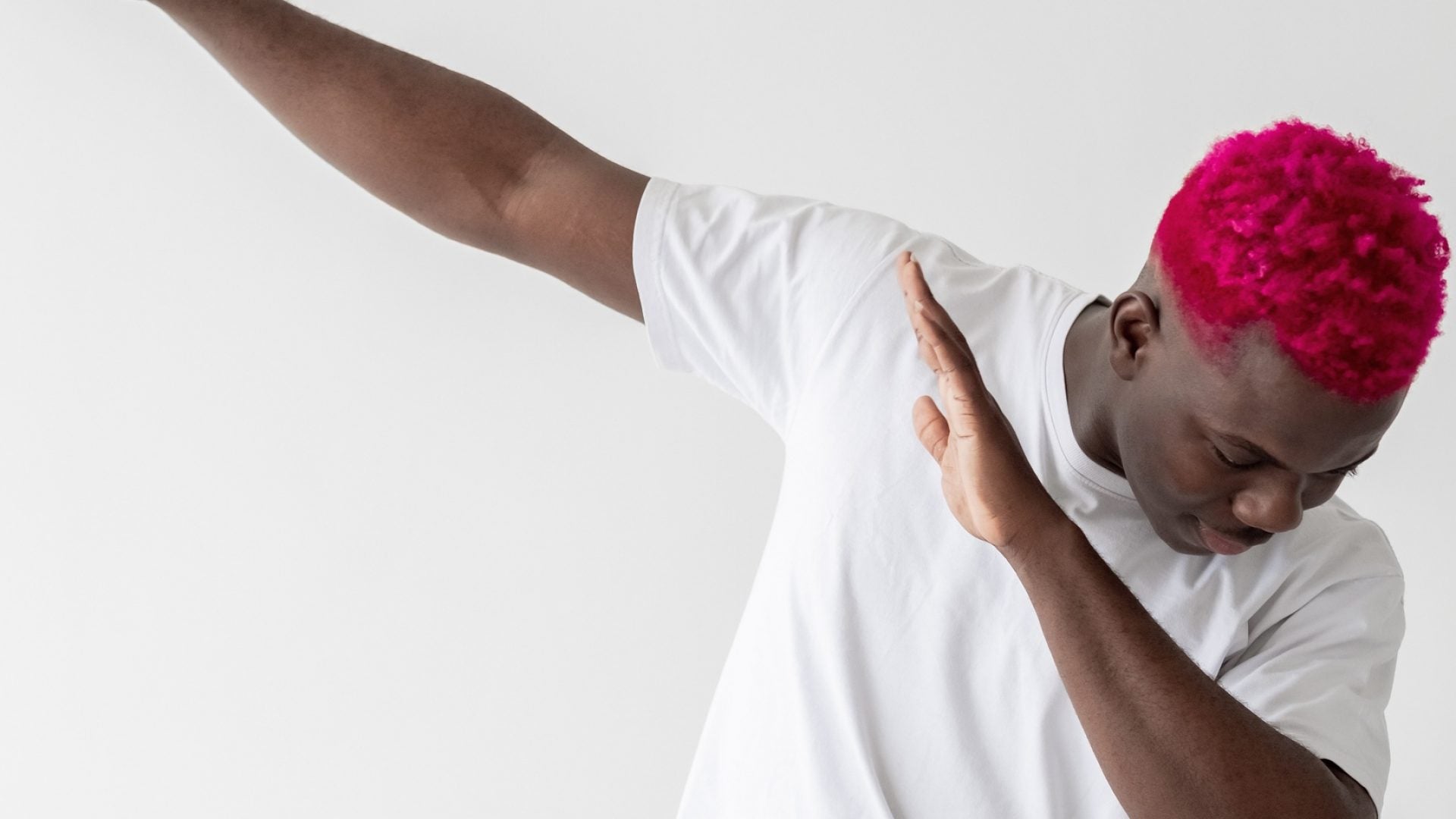
When rapper 2 Milly first filed a lawsuit against video game and software developer Epic Games in 2018, contending that its Fortnite game ripped off his “Milly Rock” dance moves, David Pellum II paid close attention to the case, engrossed in its potential implications for creators.
“When everybody was trying to sue Fortnite for their likeness and their dance…That’s when I started raising questions about how this whole choreography stuff works,” he says.
Seven years into a music production career, Nashville-based Pellum boasts impressive credits including “Energy” by Drake, Khalid’s “Location” and Beyoncé’s live film, “Homecoming.” Although 2 Milly eventually dropped the case, Pellum’s interest in intellectual property was ignited by the incident, and he began pursuing licensing, royalties, and managing music copyright under his company, Pellum Publishing. He currently represents ESPN’s stadium anthem “Swag Surfin,” but is yet to copyright the dance associated with it. With the ongoing TikTok strike whereby Black creators are refusing to make content — notably dances for popular songs that usually go viral — to protest cultural appropriation in conjunction with alleged creative theft, Pellum sees an opportunity for creatives to be more contentious about safeguarding their work.

“There’s two ways to do this. The government is very slow and there’s people that are involved that don’t really know the culture…and they can say yes or no to a dance,” Pellum says, referring to creatives who wish to pursue legal safeguard via copyright. “So, the best way is if they say yes, you can get it copyrighted, it’s $35 and to expedite [it] is $800. That’s one way.”
New York City-based entertainment attorney Casandra Spangler notes that copyright fees fluctuate, and there are stipulations regarding applying for an expedited copyright.
“Whether it’s dance or music, it can vary a little bit in the range between $35 and $75,” she says. “The expedited fee is very high, and there has to be some kind of a legal action. So, you have to be in the process of filing a lawsuit or something like that, in order to request expedited processing.”
The move to copyright dance moves made news earlier this year in April when celebrity choreographer JaQuel Knight announced the launch of Knight Choreography and Music Publishing Inc. In doing so, Knight became the first choreographer to own the copyright of his own movements and routines.
It’s a tricky endeavor, according to Spangler, because the law is slow in comparison to how quickly culture and media evolve, especially where digital media is concerned.
“Copyright law in general is pretty behind and it hasn’t caught up with a lot of new technology, especially where you have things that are going viral, which didn’t exist when the copyright law was written,” she says. “Now you’re talking about platforms like TikTok where it could overnight be copied… hundreds or thousands of times, and the copyright law just hasn’t really caught up with a way of dealing with that.”
Texas-based creative and dancer Cat J, however, was thrilled when she first learned about Knight’s company. Although her social media focus is largely on Instagram and YouTube as opposed to TikTok where the Black creators strike has been most prevalent, she notes that Knight’s action should become a norm in the digital age across platforms.
“I love that idea. Because being a creative, I understand how it feels to get my choreography stolen. I’ve had my choreography stolen before,” she says. “When you go to Instagram, you can’t post certain videos with certain music because they’re copyrighted. I feel as though it should be the same for dance moves where maybe not so much you can’t post it, but it’ll show whose credit it is.”
Pellum says an official use of credit or crediting is the way forward for Black creatives to protect their rights in dance in the digital space. Obtaining credit would show that you are the first person who created a routine or choreography, which can result in indisputable acknowledgement, and make securing monetary returns easier.
“Credit is the biggest thing right now. With that, I’ve teamed up with a digital platform called Clocr,” he says. “Basically, it’s a digital vault. You can go in and throw your video in there, upload your video and you’ll get an official timestamp…a timestamp certification of when your creation was uploaded.”
According to Pellum, credit in this capacity will be groundbreaking because even if you fail to get a legal copyright approval, the time stamp certification demonstrates evidence. His venture with Clocr is music to the ears of New Jersey-based artist FlyBoyFu, the creator of the viral TikTok song and dance, “Laffy Taffy (Remix).” FlyBoyFu is also currently working with Pellum.
“This is a big breakthrough of what we’ve all been waiting for because we don’t have it as dancers, you know, we don’t have the protection, to protect our dances…it’s always about songs,” he says. “Your work is timestamped…You have your proof…so if someone goes and tries to take your stuff, you go right back into your receipt, you pull that up… and now you can get compensated.”
FlyBoyFu also expressed support for the TikTok strike and discontentment with the platform’s inability to incorporate technology that could circumvent this lack of crediting culture. He says that the lack of recognition has bolstered a spirit of distrust among Black creatives toward the platform, and that they feel disillusioned by seeing the profile of their white counterparts heighten while performing the dances Black creators make. The proverbial straw that broke the camel’s back for many was Tik Tok user Addision Rae’s now infamous appearance on Jimmy Fallon’s Tonight Show, in which she taught him dances that were created by other TikTok users, notably Black ones. FlyBoyFu hopes the strike continues.
“Why would they want to keep going and creating things when they’re not getting the proper credit. It’s discouraging,” he says. “Some people don’t want to create anything [anymore] because they kind of feel like it’s going to keep getting taken.”
A representative for TikTok cited the company’s blog post detailing their commitment to “diversity and inclusion.” And in a statement to Essence on the dissent from Black creatives, a spokesperson for TikTok said the following, “We recognize and value the impact that Black creators continue to have on our platform and across culture and entertainment. We’re committed to investing in resources and building technology that address their concerns, including finding solutions that help cement a culture of credit and working to ensure fair and equitable moderation policies. We wholeheartedly want to be part of the solution and will continue to share updates as we make progress toward these goals.”
For Florida-based creative and life-long dancer Erick Louis, TikTok’s actions (or lack thereof) in response to the Black creators, has not been good enough, and he has taken his own unique approach to protesting the platform. Initially not a big user of TikTok for dance — at least not in terms of his own choreography — Louis has opted to retaliate against Black creative theft by claiming white creative output on the platform as his own.
“In protest to the appropriation of content on the app and the anti-Blackness and suppression we deal with, I’ve decided to steal any and all content made by white folk on the app,” he says. “Basically, what I’ve been doing is stealing choreography that white folk have made and repurposing it and putting it on my platform.”
Arguably, he has been quite successful with his most recent video having been viewed 1.7 million times, and two others getting over 1 million and 3 million viewers, respectively. As a fellow creative, he’s wrestled with the ethical dilemma of this action, but believes it is necessary in order to push back against both this current moment and the United States’ historical white pop culture practice of appropriating from Black artists, without credit or compensation.
“I see these white choreographers…get on these platforms and preach to us about what hip hop culture looks like, that they created this or [that… they they’ve created their own styles within hip hop. [But it] never made sense to me because all they’ve managed to do is regurgitate blackness,” he says.
Retributive theft aside, another ethical dilemma that Black creators pushing back on all platforms have to contend with is the history and politics of claiming dance moves versus dance routines and demonstrating the difference between the two. In the context of the Black diaspora where some movements may have a history traced to precolonial African communities, it is possible that a dance move or even many moves that may be composed in a routine can be made popular in a viral video. Who does the dance belong to then?
Spangler draws a parallel to music, suggesting that legally, dance and movement would likely work the same way: some parts of a choreography could be copyrighted, while others are fair use or free to use by anyone.
“So, in that situation, what happens is the original elements are protected, and the… elements that they’re taking from the public domain are not protected,” she says. “But if you’re adding enough unique elements and you’re putting them together in a way that creates a unique choreography, then the unique part of it would be protected by copyright.”
While the law continues to lag, Pellum is laser focused on credit as the way to ultimately give Black creators a voice. And for him, it’s not just about protecting individual creators, but also, giving Black culture it’s due.
“Young people are making a movement by telling their story through dance. Black creators are now expressing themselves through dance to document their ideas and experiences,” he says. “I want to preserve the art of dance in the digital age, we as Black people need to start archiving the origins of these creations.”





